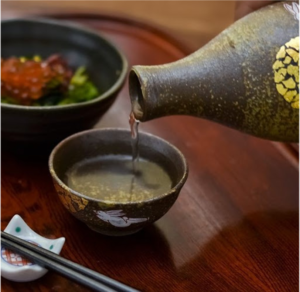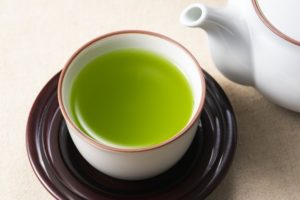How to choose and care for Japanese Kyusu teapots
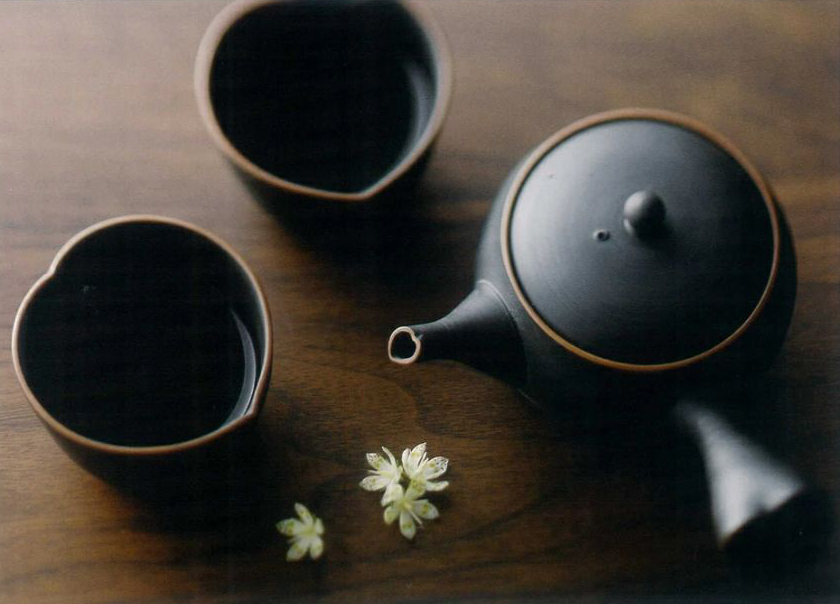
A Japanese Kyusu teapot that is indispensable for drinking freshly brewed Japanese tea. In addition to the classic Tokoname-yaki Japanese Kyusu teapot, there are many fashionable Japanese Kyusu teapots with unique handles and tea strainers, which are old-fashioned tools, but Japanese Kyusu teapots are updated daily. Recently, Kyusu teapots made of hard-to-break resin and heat-resistant glass are also gaining popularity.
This time, we will introduce recommended items of such popular Japanese Kyusu teapot products.
First of all, I will explain how to choose a Japanese Kyusu teapot, so please refer to it and find the perfect Kyusu teapot for you.
At the same time, please refer to the care and cleaning methods for Japanese Kyusu teapots.
Enjoy delicious Japanese tea in your favorite Kyusu teapot.
Contents
How to choose a Japanese Kyusu teapot
From the basic selection of capacity and material to the easy-to-use shape and tea strainer type, the point is that "If you hold down this point, you will find an easy-to-use Kyusu." Please use it as a reference when choosing a Kyusu in the future
◎ Choose the size of the Kyusu teapot according to the amount to be brewed
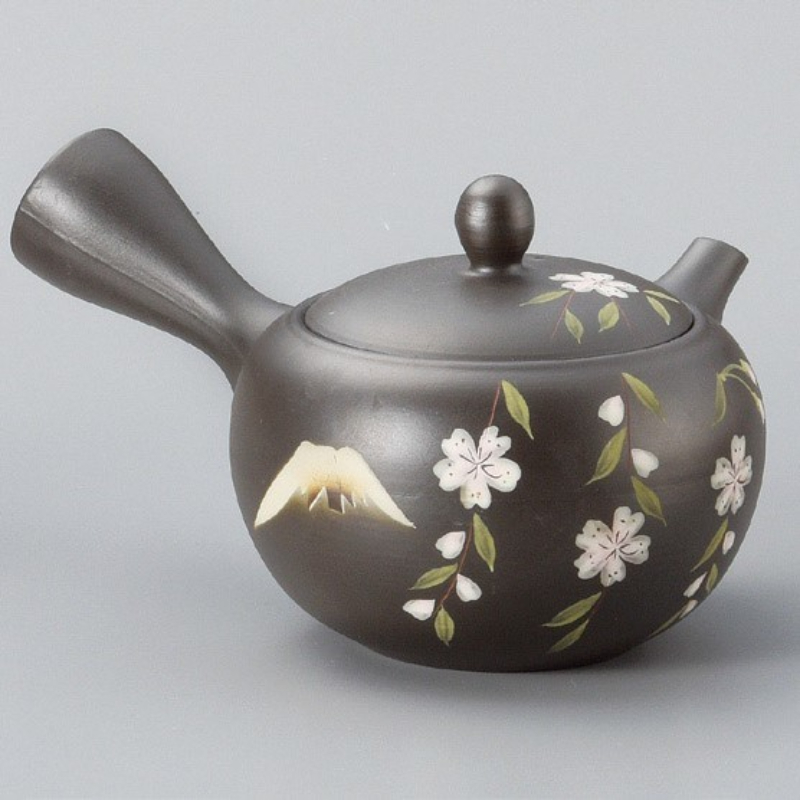
If the amount that the Kyusu teapot can handle and the number of people who spend the tea time do not match, you will not be able to spend a comfortable time.
If the Kyusu teapot is too large, the tea will come out too much and the taste will be bitter, and if it is too small, it will have to be replenished many times and the tea made at the beginning will cool down.
The guideline for the size of the Kyusu teapot for each person is as follows.
■ For 2-3 people: 200ml-340ml
■ For 3-4 people: 340ml-480ml
■ For 4-5 people: 480ml-600ml
By the way, genmaicha and hojicha are often drunk with a large cup, so we recommend the clay bottle type Kyusu teapot of about 600ml to 800ml.
The size you should choose depends on how much you drink, but the typical size of a Kyusu teapot is 200-340 ml.
He is too big and it is very difficult to brew a serving with a Kyusu teapot, so if you are buying for the first time, he should choose his Kyusu teapot with a size of 200-340ml.
If you can actually hold the Kyusu teapot in your hand and choose it, pay attention not only to its capacity but also to its fit when you pick it up.
The size of the Kyusu teapot, which is easy to hold, varies depending on the size of your hand, so does the handle fit in your hand? Is the weight appropriate? Please check it out.
◎ Check the perfection of the lid of the Kyusu teapot
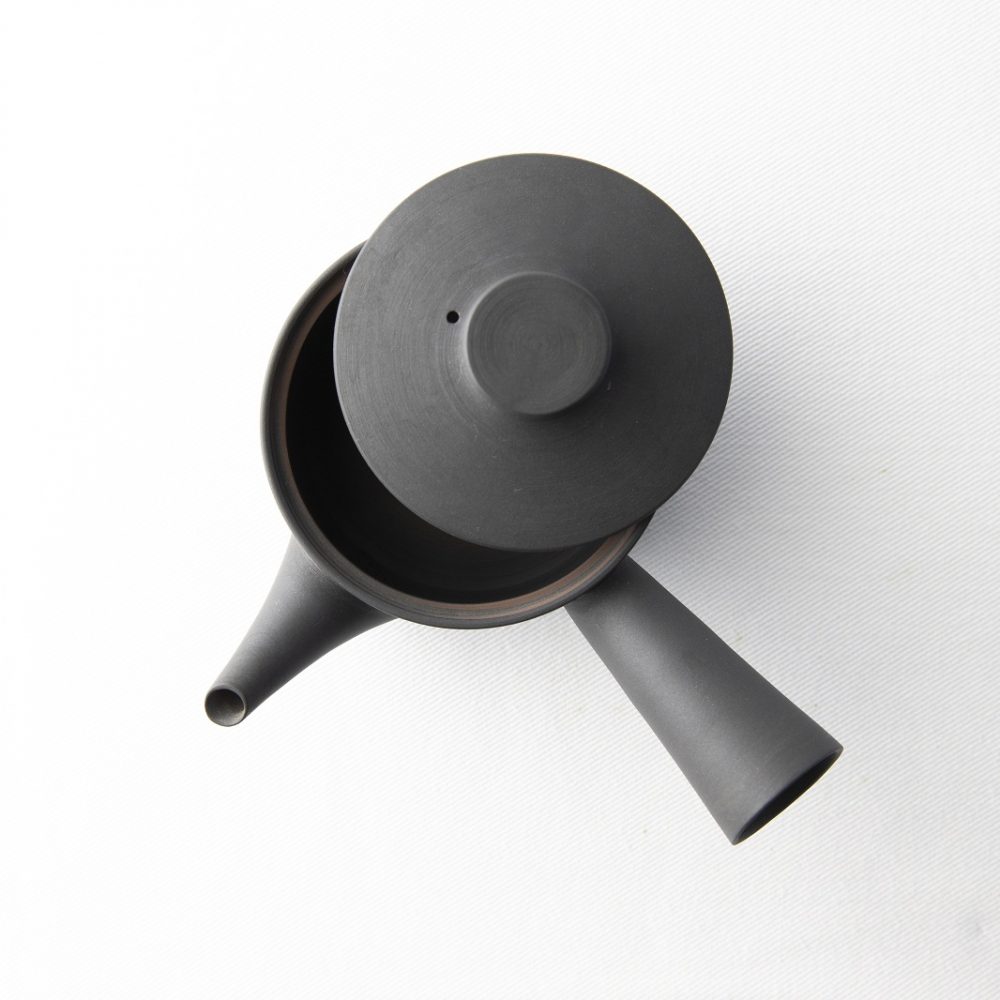
When deciding whether it is a good Kyusu teapot, you should definitely check the completeness of "Kyusu teapot matching".
"Grounding" refers to the area where the Kyusu teapot body and lid overlap.
If there is a gap here, the steaming will be affected and the temperature of the poured hot water will easily drop, making it impossible to brew delicious tea.
With a cohesive Kyusu teapot, you can not only brew delicious tea, but also prevent the tea from leaking from the lid when pouring.
Almost no Kyusu teapots made in the big production areas of his Kyusu teapots like Tokoname ware, or Kyusu teapots handmade by craftsmen, are not well-matched.
Not only is his technical ability to produce high, but his Kyusu teapots, which look the same, are also made by rubbing them one by one, so please use with confidence.
◎ Kyusu Teapot Choose the type of tea strainer according to the tea leaves
Depending on the type of tea strainer, the method of care and the orientation of the tea leaves will change, so choose the one that best suits the points you want to emphasize and the tea you want to drink.
"SASAME / Cera mesh" with a hole in the Kyusu teapot body

Sasame is a type of tea strainer made of ceramic with a hole in the body of his Kyusu teapot.
Since the space inside the Kyusu teapot can be widened, jumping of tea leaves often occurs and flavorful tea can be brewed.
It takes some time to clean the teapot because the japanese tea leaves cannot be removed from the Kyusu teapot immediately, but it is recommended for those who want to stick to the deliciousness of a cup of teapot.
However, it's a good idea to choose his fine-meshed Kyusu teapot.
If the mesh of the Kyusu teapot is coarse, the mesh may become clogged or the tea leaves may come out as they are when using fine japanese tea leaves such as japanese deep-steamed green tea.
If you are drinking high quality tea such as lightly steamed tea, please buy his Kyusu teapot from SASAME.
The more people use only SASAME / Ceramesh Kyusu teapots, the more you can enjoy the original taste of tea.
The roughness of the mesh varies from fine mesh to coarse, just perforated, depending on the Kyusu teapot.
If you want to get his Kyusu teapot with fine mesh SASAME / Ceramesh, it may be better to actually check it visually.
"Stainless steel mesh" tea strainer Japanese Kyusu teapot ideal for everyday use
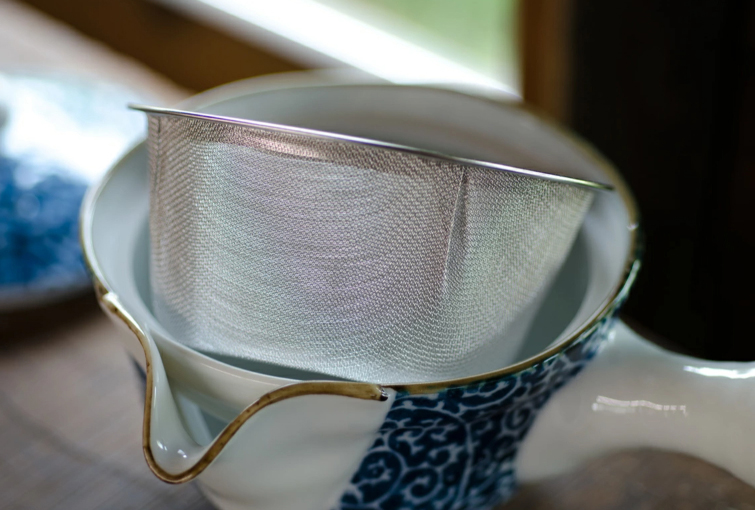
The best choice for everyday use is the Japanese Kyusu teapot with a stainless steel mesh tea strainer.
There are almost no coarse Kyusu teapots, and it is a Kyusu teapot that can be used for any kind of tea, from large tea leaves to fine tea leaves.
Things that he can remove from the Kyusu teapot, such as a basket net, are easy to clean, and those with the net attached directly to the Kyusu teapot are easy for hot water to convect and enhance extraction power.
In addition, some stainless steel tea strainers are treated with fluorine, which has the effect of preventing the tea leaves from sticking together, so if you want to care for the Kyusu teapot more easily, this is one of the options. Try to add.
When choosing a basket net, make sure it reaches the bottom of the Kyusu teapot. If you choose a tea with a shallow net, you may want to brew tea for one person, but the tea leaves do not soak in hot water.
I think that the tea strainer attached to the Kyusu teapot will make more delicious tea.
However, depending on the person, the important points may differ depending on whether you want to make the washing easier or just bleach the net, so please consider your taste and ease of use when choosing the Kyusu teapot.
◎ Japanese Kyusu teapot material is selected according to taste
The materials used in Japanese Kyusu teapots are quite diverse.
However, although there are differences in properties depending on the material, there is no standard that "because this tea is used, you should choose a Japanese Kyusu teapot made of this material." Consider the material as one of the designs because it is used almost every day, and choose the Kyusu you like.
Japanese Kyusu teapots such as Tokoname ware and Banko ware: "Stoneware and pottery" that mellow the taste
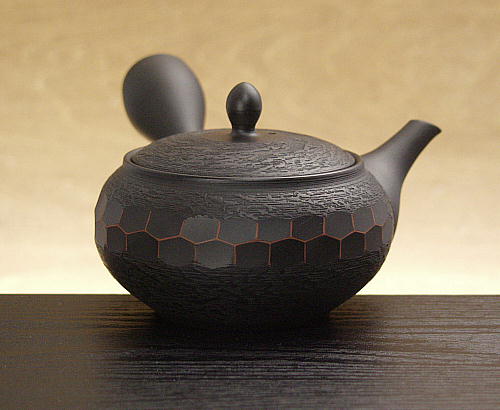
Many Japanese Kyusu teapots are made from Tokoname ware.
Not only are many of them of high quality, but they also have a certain level of water absorption and the property of removing impurities contained in water, which also has the effect of mellowing the taste of tea.
In addition to stoneware such as Tokoname ware, Japanese Kyusu teapots made of pottery such as Mashiko ware and Mino ware also have the property of bringing out the astringency and taste of tea in a well-balanced manner.
Arita porcelain Japanese Kyusu teapot: "Porcelain" that brings out the taste and aroma straight
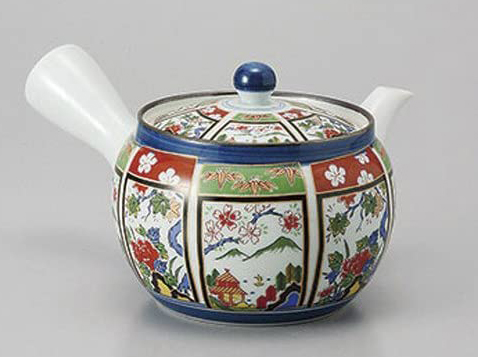
Japanese porcelain Kyusu teapots are made by firing stone powder at 1300 degrees or higher and are characterized by their white color.
Arita porcelain is typical, and its water absorption is inferior to that of pottery, but instead, you can enjoy the original taste and aroma of tea leaves and hot water itself.
"Heat-resistant glass" that is fun to look at Kyusu teapot

A glass Kyusu teapot that you can enjoy visually as the tea leaves open and change color.
It has the characteristic of producing the taste and aroma of tea straight.
However, since ordinary glass has a risk of breaking when pouring hot water, choose heat-resistant glass that has been specially processed to withstand high temperatures.
In addition, some heat-resistant glass kyusu are compatible with microwave ovens.
It can be said that his Kyusu teapot is extremely versatile and can be reheated even when the tea is cold.
Nanbu Tekki Kyusu teapot, etc .: "Iron" Kyusu teapot that tastes better the more you use it
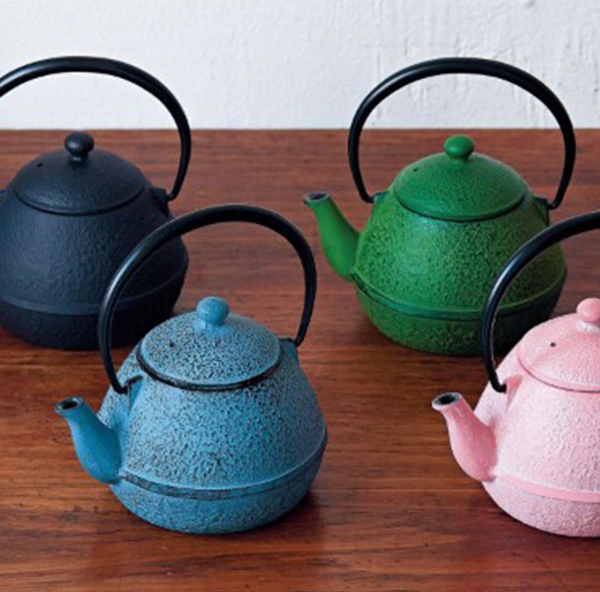
Nanbu Tekki is famous for his iron Kyusu teapot.
The solid design and durability not found in other materials is his Kyusu teapot not found in other materials.
Since it has been used as a tool for boiling water, it is not suitable for bringing out the delicate taste, but it is not a problem for brewing hojicha or genmaicha.
However, there are many misconceptions that his Kyusu teapot from Nanbu Tekki may be able to replenish iron.
The iron dissolves in the case of a Kyusu teapot for boiling water, and the inside of his Kyusu teapot for brewing tea is enamel-processed so that the iron does not dissolve.
Hard-to-break "resin" Kyusu teapot
His Kyusu teapot, which uses transparent materials such as acrylic and polycarbonate, has the great advantage of not only being able to see the contents but also being hard to break.
It's easy to clean, so it's perfect for everyday use.
Unlike heat-resistant glass, it cannot be used in microwave ovens, but if you have a family with children or have a weak grip and feel that his Kyusu teapot is heavy, you may drop it and break it. Recommended for those who are worried.
◎ When choosing a Kyusu teapot, stick to the shape and pursue deliciousness and ease of use.
The last point to check is the shape of the Kyusu teapot.
Please check the following two points to see if it is a really easy-to-use Kyusu teapot.
It is flat Japanese Kyusu teapot that makes Japanese tea delicious
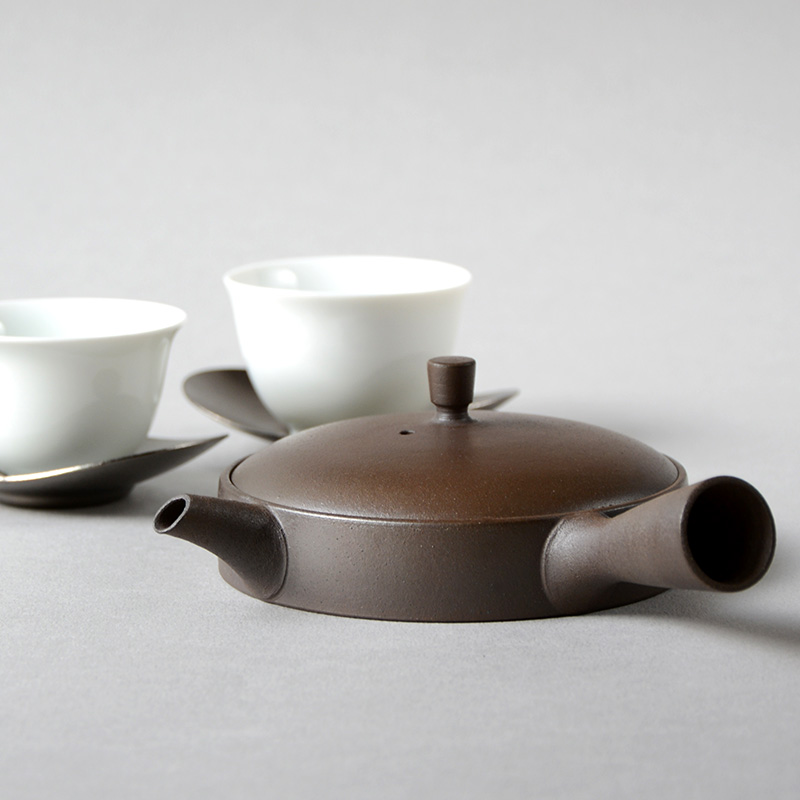
Choosing his flat-shaped Kyusu teapot rather than the vertically elongated Japanese Kyusu teapot will make a delicious tea.
The reason is that hot water can be convected efficiently.
Let the tea leaves swim well in the Kyusu teapot and let the hot water extract the good ingredients of the tea.
Furthermore, the flat shape tends to have a larger lid, which makes it easier to clean.
If you're buying for ornamental purposes, it's not a bad idea to choose a portrait Kyusu teapot.
Kyusu teapot with a narrow spout for small hot water drinks
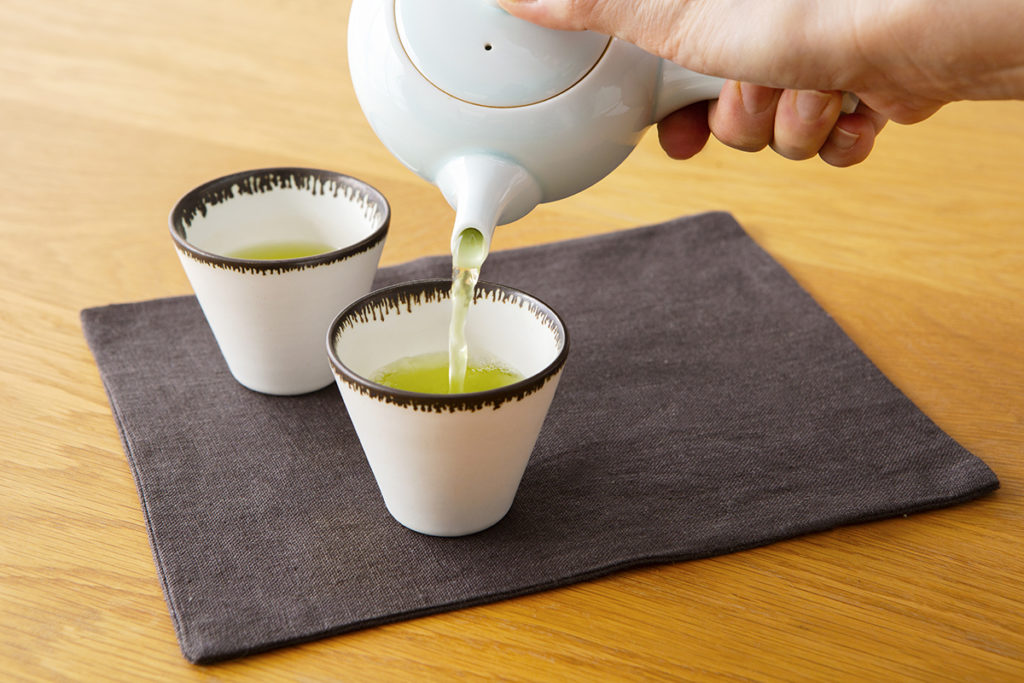
It is important to choose the thickness of the spout of the Kyusu teapot that matches the size of the hot water drinker.
If the teacup you are using is small, a narrow Kyusu teapot that drains well and can be poured little by little, or a thick Kyusu teapot that can pour a large amount of tea is suitable for his teacup with plenty of tea.
The thickness of the Kyusu teapot spout is also important, but let's also pay attention to the shape of the Kyusu teapot spout itself.
If you choose a Kyusu teapot that has a long spout and a long tip, there will be no back leakage or running out of water.
10 recommended Japanese Kyusu teapots by Tokyo Store staff
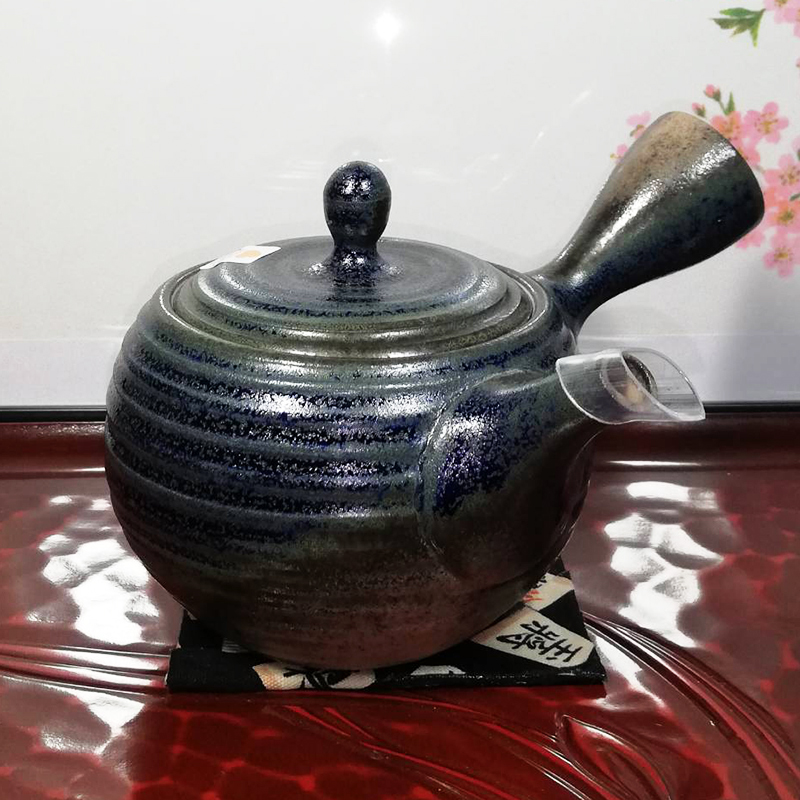 |
Tokonameware Ceramic tea strainer Japan Kyusu teapot Potter’s wheel design $70 Tokoname ware Ceramic tea strainer Japan Kyusu teapot Potter’s wheel design Not only is it easy to hold and it feels good to pour, The reason why Tokoname Yaki Kyusu is widely trusted is because of the “sophistication of the tea strainer”. It is a “traditional technique” that Tokoname ware Kyusu is proud of, created by craftsmen working hard. |
 |
Tokoname ware black SAKURA carve Kyusu teapot ceramic tea strainer ceramic mesh type $85 Size / capacity: 310cc The capacity is 80% when it is full. Producing area: Japan Material / ingredient: Pottery Not only is it easy to hold and it feels good to pour, The reason why Tokoname ware Kyusu is widely trusted is It is in this “sophistication of the tea strainer part”. Craftsmen worked hard to create it, It is a “traditional technique” that Tokoname ware Kyusu is proud of. |
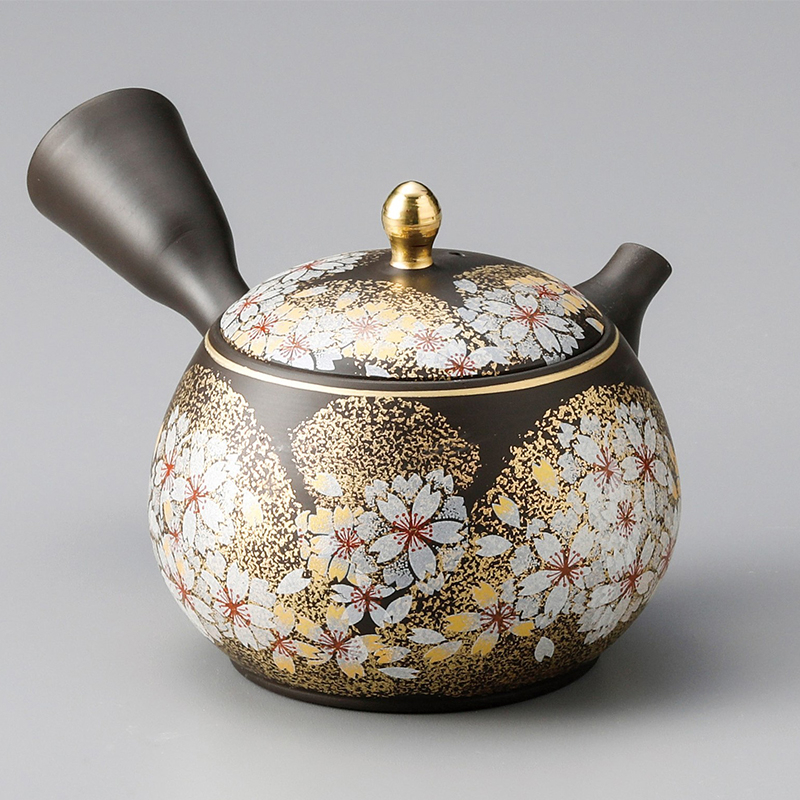 |
Tokoname ware Kutani ware collaboration Kyusu Japanese teapot Sakura $183 Hanamitsumori Collaboration between Tokoname ware and Kutani ware. The Kyusu made by pulling the potter’s wheel of vermilion clay is made with the concept of being simple, light and easy to use. We skillfully combine various techniques such as blue grains, red grains, gold leaf, silver leaf, and transfer overpainting, and paint in consideration of the balance with the shape of the Kyusu. |
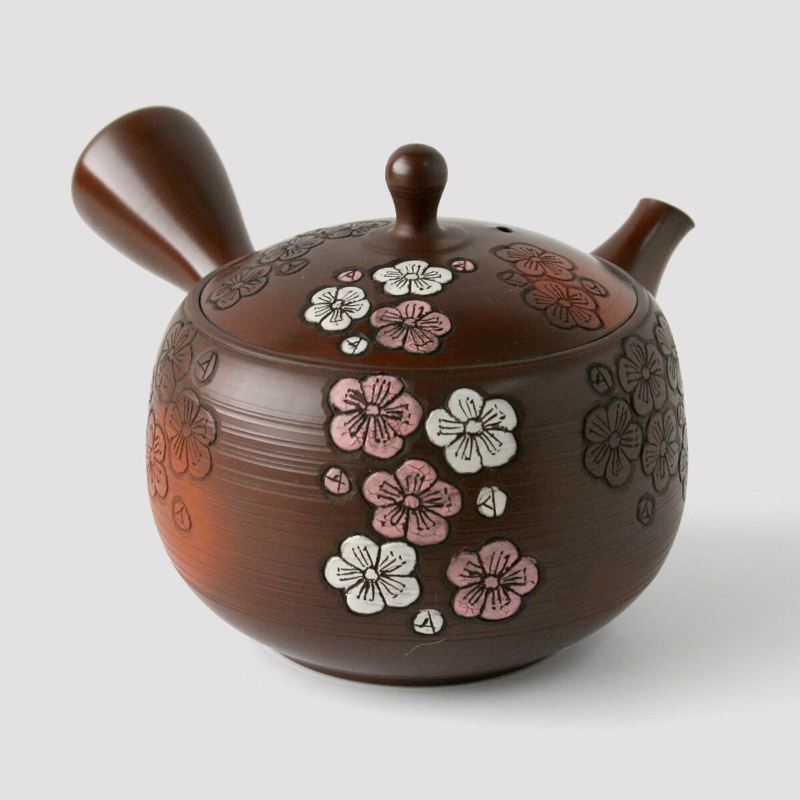 |
Tokoname ware Kyusu japanese tea pot Two-color plum carving $150 It is a Kyusu with two-colored plums and plain plums in full bloom. Size / capacity: 220cc The capacity is 80% when it is full. Producing area: Japan Material / ingredient: Pottery Cera mesh Not only is it easy to hold and the spout is comfortable, The reason why Tokoname ware Kyusu is widely trusted is the sophistication of this tea strainer. |
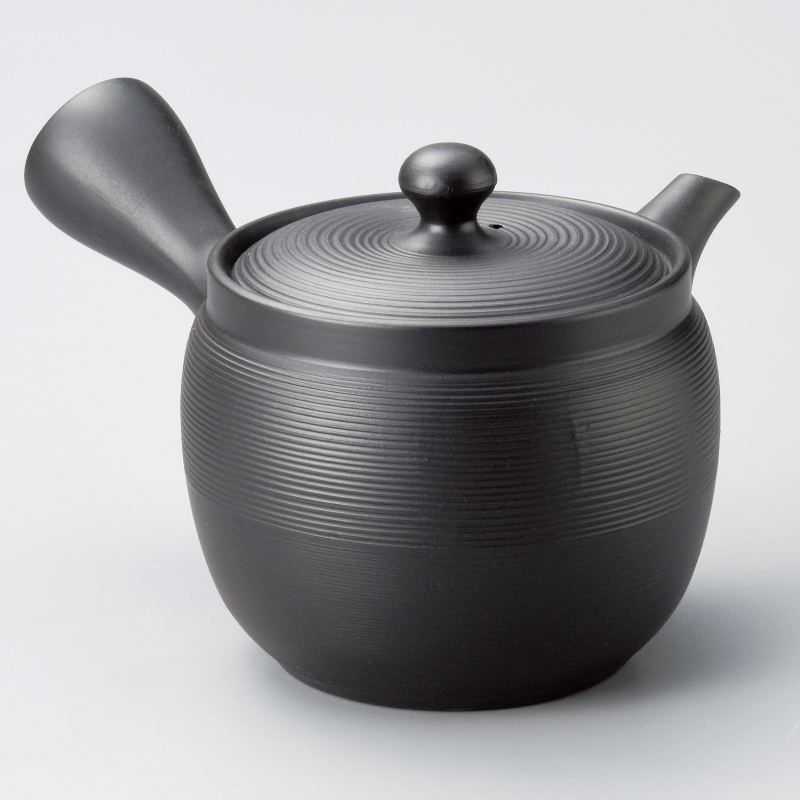 |
Tokoname ware Kyusu Japanese teapot Akimitsu black kiln change line segment teapot $83 When you have a good time with your friends This big Kyusu is perfect. Cera mesh Not only is it easy to hold and it feels good to pour, The reason why Tokoname ware Kyusu is widely trusted is It is in this "sophistication of the tea strainer part". |
 |
Tokoname ware Kyusu Japanese teapot black line deep steamed type $65 Since it is a fine tea, use a delicate mesh tea strainer when brewing. It is required to strain and brew. This one has a fine mesh tea strainer made of stainless steel. A kyusu suitable for brewing deep-steamed tea. Size / capacity: 170cc The capacity is 80% when the water is full. Producing area: Japan Material / ingredient: Pottery |
 |
Tokoname ware Kyusu Japanese teapot autumn leaves ginkgo deep steamed type $85 There are few Kyusu Japanese teapot bodies with motifs. The design that makes the best use of autumn leaves and ginkgo leaves gives a sense of luxury. Size / capacity: 200cc Capacity is 80% when full. Production area: Japan Materials / ingredients: Pottery |
 |
Tokoname ware Kyusu Japanese teapot Sakura Fuji $100 It isin the sophistication of this tea strainer part. Craftsmenworked hard to create it, It isa traditional technique that Tokoname ware Kyusuteapot is proud of. Size/ capacity: 290cc Capacityis 80% when full. Productionarea: Japan Materials/ ingredients: Pottery |
 |
Tokoname ware Toyoyaki 〆 Butterfly and peony carving Kyusu teapot Cera mesh type $320 Thenumber of craftsmen who carve swords in Tokoname Kyusu teapot ware isdecreasing. It is a product that challenged carving with a stamp sword. It is the beginning of a new challenge. Size/ capacity: 230cc The capacity is 80% when it is full. Producing area: Japan Material / ingredient: Pottery |
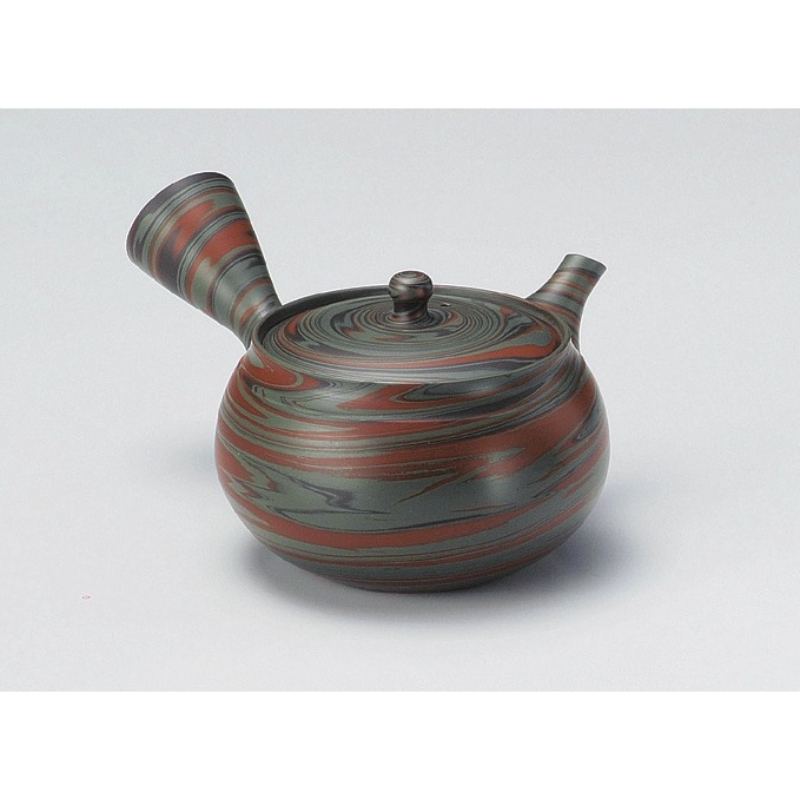 |
TosenNo. 16 kneading design Japanese Kyusu teapot $100 Capacity:280ml Size: Length 13 Width 16 Height 8.5 cm Producing area: Japan Ingredients: Ceramic clay * It is a removable stainless steel net. Arelatively large teapot for 2 to 4 people * Timeless soil, shape and decoration * Easy-to-hold, easy-to-use shaped handles and knobs |
Correct care and cleaning method for Kyusu teapot
Even if you use Japanese Kyusu teapots on a daily basis, you may not be familiar with how to care for his Kyusu teapots.
Make sure to check everything from how to wash the Kyusu teapot to how to remove the sticky tea astringency.
You can use the Tokoname-yaki Kyusu teapot without any pretreatment.
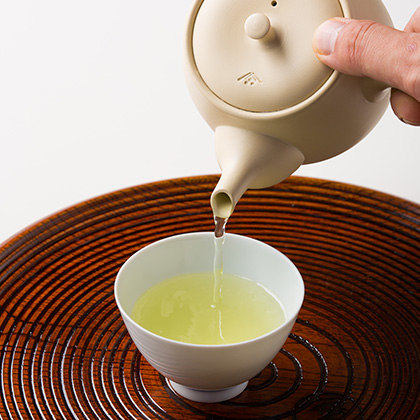
Kyusu teapots with good baking, such as Tokoname-yaki Kyusu teapots, which are baked at a high temperature of 1100 degrees or higher, do not require any special preparation when used for the first time.
Rinse quickly with lukewarm water to remove dust, and then brew the tea as it is.
However, his Kyusu teapots of earthenware such as Mashiko ware and Shigaraki ware require the same pretreatment as plates.
If he has trouble boiling the Kyusu teapot with rice broth or putting it on the fire, soak it in rice broth to fill the gaps in the soil.
By doing so, you can use his Kyusu teapot, which remains beautiful, for a long time.
If you really care about the smell of his new Kyusu teapot, try washing it with a shell.
Tea has the property of adsorbing odors, so you can get rid of unpleasant odors with just that.
It is also important not to use a microwave oven or dishwasher to keep using it for a long time.
There is nothing that you should never use, but we recommend that you do not use it too much as it may cause stains and cracks.
When you wash the Kyusu teapot, please usually wash it with hot water.
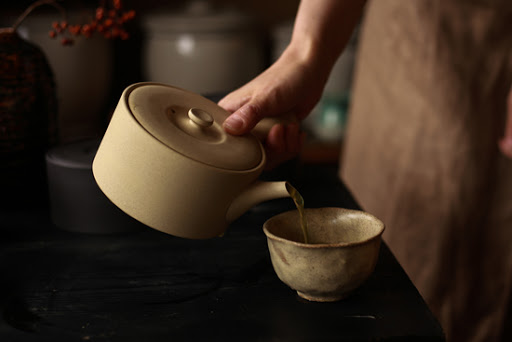
It is better not to use detergent.
After using the Kyusu teapot, it is easier to remove the tea astringency by washing it with hot water instead of water.
Also, depending on the material, it is safer not to use detergent because the odor of Kyusu teapots is very easy to transfer.
Even if you use it, avoid the one with a strong scent as much as possible.
When washing, pour water directly into the spout as well as in the Kyusu teapot, and wash thoroughly with a stream of water.
After washing, he needs to dry the Kyusu teapot properly, but to finish it, he puts hot water in the Kyusu teapot to make it easier to dry naturally.
By the way, when you dry it, put it in the washing basket with the Kyusu teapot spout down, and you can dry the inside of the spout well.
If you can't get the tea leaves out after brewing hot water, he first tilts the Kyusu teapot and taps the other side of the spout.
The tea leaves will come to the back so that you can easily remove them from the bottom of the Kyusu teapot.
Baking soda and bleach are effective for tea astringency stuck in the Kyusu teapot.
Boil with baking soda is effective for sticky stains.
To wash, first pour hot water into a large pot that can hold the entire Kyusu teapot, and add about 2 tablespoons of baking soda.
Then boil for about 20 minutes.
If you let it cool and wash it as usual, the sticky tea astringency should be removed.
However, at this time, aluminum pots and Teflon-processed pots are strictly prohibited as the material will be damaged by baking soda.
Also, if you are concerned about the yellowing of his white porcelain Kyusu teapot, it is effective to soak it in bleach.
Furthermore, when boiling or bleaching, you can clean the Kyusu teapot to a finer detail by rubbing it with a soft brush or cotton swab.
However, even in that case, if you rub it with something that is too hard, he will scratch the body of the Kyusu teapot and the tea strainer, so it is important to choose one that is reasonably soft.
If you are concerned about the dirt on the white Kyusu teapot, use bleach to clean it.
It feels better to brew tea in his beautiful Kyusu teapot!
* After using bleach, rinse the Kyusu teapot thoroughly and allow it to dry thoroughly so that the odor does not transfer to the Kyusu teapot.
Summary
Enjoy delicious Japanese tea in your favorite Japanese Kyusu teapot ♬
If you want to drink Japanese tea, please stick to the Kyusu teapot and enjoy delicious Japanese tea.
We have introduced the recommended Japanese Kyusu teapots that are indispensable for Japanese tea time.
Not only the design but also the functions for making delicious tea are enriched.
When you're busy, it's important to have time to enjoy delicious tea in your favorite Japanese Kyusu teapot.
By all means, come across the gem of Japanese Kyusu teapot that you can spend a long time with, and spend a meaningful Japanese tea time.
Author Profile
Latest entries
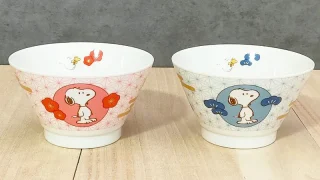 Rice Bowl / Ramen Bowl2025年8月5日Snoopy Japanese Rice Bowl Set - Red Plum & Blue Pine Design - Made in Japan, Microwave & Dishwasher Safe
Rice Bowl / Ramen Bowl2025年8月5日Snoopy Japanese Rice Bowl Set - Red Plum & Blue Pine Design - Made in Japan, Microwave & Dishwasher Safe matcha bowl / Yunomi tea cup2025年1月21日Kutani ware teacups are very easy to use
matcha bowl / Yunomi tea cup2025年1月21日Kutani ware teacups are very easy to use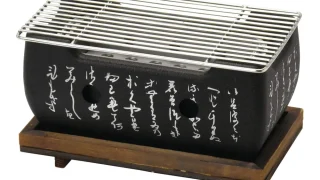 Japanese style BBQ stove grill2025年1月20日Combine a Japanese style BBQ stove grill and sake cups for a special dinner
Japanese style BBQ stove grill2025年1月20日Combine a Japanese style BBQ stove grill and sake cups for a special dinner SAKE bottle and SAKE cup2025年1月17日Mino Ware Gold-painted Sake Ware is Very Beautiful
SAKE bottle and SAKE cup2025年1月17日Mino Ware Gold-painted Sake Ware is Very Beautiful

